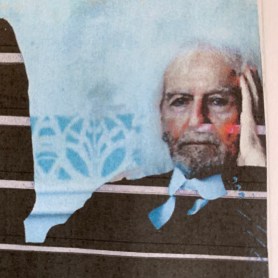A Memorial to Murdered Jews in Europe is located in Berlin, I learned last week at one of the sessions of the Annual Slave Dwelling Project Conference, and is the size of six or seven football fields. Not only is it huge, but the memorial sits in the middle of the capitol city.
During a Keynote presentation entitled, What Americans Can Learn from Germany’s Racial Reckoning, Susan Neiman asked, can you imagine if a comparable monument existed in Washington DC to memorialize the victims of slavery?
It took fifty years for such a conscious attitude to emerge in Germany, but we’ve had more than four hundred. Only now do the monuments to the Confederacy start to come down. Only now are state flags being revised to eliminate references to chattel slavery.
In Germany, it is illegal to display a swastika. If only confederate flags were equally taboo here (or swastikas, for that matter). If only an Anti-Lynching law could pass in the Senate!
Thanks to Bryan Stevenson, of course, we now have what’s casually referred to as the Lynching Memorial down in Montgomery, Alabama. The National Memorial for Peace and Justice. It goes a long way to recognizing the reign of terror (aka Jim Crow) and its many, many victims. I love the way the project collects soil from the sites of violence for the museum and erects markers at the site of the killings, often with surviving family members present.
The soul jars (an autocorrect for “soil” that I’m gonna let stand) are more akin to another memorial highlighted by scholar Neiman : the Stumbling Stones. These are small, engraved plaques located at the entrance to homes in 1200 cities through Europe and Russia. There are 70,000 in all.
A Guardian article compares the large memorial in central Berlin with these smaller, localized remembrances:
If Eisenman’s large monument, set in the governmental heart of Berlin, emphasises the scale and political culpability of the Holocaust, the Stolpersteine [Stepping Stones] focus on its individual tragedies.
Each stone is engraved with the following: Here Lived — the name of the former resident, their date of birth, and their fate. Some list internment, suicide, or exile, but most of them list deportation and murder.
On this side of the Atlantic, smaller American memorials to the victims of enslavement can be found here and there, with more springing up all the time. While these can never take the place of a national monument, they do matter. I know of at least two.
For example, Boston just recently erected a monument honoring those who were kidnapped from Africa and shipped here for sale. I visited The Middle Passage Memorial on Long Wharf and wrote about it here.
There’s also the African Burying Ground in Portsmouth posted about here after a trip to New Hampshire specifically to see it.

But again, let’s contemplate what it would be like if our country had the will, the sense of justice, and the dedication to righting the wrongs of the past such that we created a significant memorial in our Capitol.
It’s unthinkable right now.
I don’t want to end on such a hopeless note, so let me cite a few recent examples of reparations or even, moves toward reparations.
From KQED. One Way To Close The Black Homeownership Gap: Housing As Reparations (full article here):
Cities like Asheville, North Carolina and Evanston, Illinois have taken steps toward reparations in recent months. In Evanston, $10 million collected by the city in cannabis revenue would be used to offer African American residents $25,000 to put toward a down payment on a home.
California just became the first state to sign a law to study and propose a potential reparations plan.
From FiveThirtyEight. Can A Local Reparations Program Undo Decades Of Housing Discrimination:
In the case of Evanston, a suburb of Chicago, the city decided to address its history of discrimination via unfair housing policies, such as “redlining,” a practice in which lenders refused to insure mortgages in and near predominantly Black neighborhoods. So, yes, this is not reparations in the way many people traditionally think of the term — i.e., direct cash payments to Black descendants of enslaved people that attempt to correct the effects of systemic racism — but it’s likely that this program will still take some first steps toward remedying housing inequity.
To end, enjoy a few screen shots.









 The nest: a classic symbol of home. My nest is empty now, but it hasn’t t always been.
The nest: a classic symbol of home. My nest is empty now, but it hasn’t t always been.



 BTW, that first shot is not a double exposure but created by shooting the glass case of a cabinet.
BTW, that first shot is not a double exposure but created by shooting the glass case of a cabinet. Then I went to find a companion for the tree as directed by Acey in Prompt 21, only to discover I’d already inserted one.
Then I went to find a companion for the tree as directed by Acey in Prompt 21, only to discover I’d already inserted one.
 Before discovering Stag Boy already glued in, I’d had the impulse to add a fabulous couple, clipped from Vogue or Elle ages ago. It is the only SoulCollage card I’ve ever made with a single clipped image. I love them so much.
Before discovering Stag Boy already glued in, I’d had the impulse to add a fabulous couple, clipped from Vogue or Elle ages ago. It is the only SoulCollage card I’ve ever made with a single clipped image. I love them so much. But then my printer went wonky and even after replacing the color cartridge, produced some bizarre and intriguing results.
But then my printer went wonky and even after replacing the color cartridge, produced some bizarre and intriguing results. It’s weird how the stripes continued the reference to prisons.
It’s weird how the stripes continued the reference to prisons.




